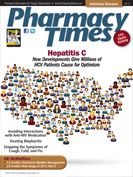Publication
Article
Pharmacy Times
New Painkillers--Friend or Foe?
Author(s):
A new formulation of hydrocodone currently in development has lawmakers and drug abuse prevention professionals concerned.
A new formulation of hydrocodone currently in development has lawmakers and drug abuse prevention professionals concerned.

As we start the year, media attention in the drug diversion arena goes to a new hydrocodone product possibly hitting the retail market with the idea that it could “spur a new wave of abuse.” In addition, a US Senator chimed in that he was concerned about the abuse and diversion of this new product and is already urging the FDA not to provide approval.
The concern is primarily with a company called Zogenix of San Diego, California, and their proposed new hydrocodone product called Zohydro. This new product is pure hydrocodone, with no acetaminophen or other products that could restrict dosages. The drug would certainly be a CII controlled substance, and it is an extended-release product designed to provide up to 12 hours of pain relief. Because it is an extended-release product, the strength of the hydrocodone will certainly be very high, with news reports indicating as much as 10 times higher than standard hydrocodone.
The immediate concern is that this drug will follow an abuse and diversion path similar to that of OxyContin several years ago, and will not only feed current addicts but possibly create a whole new group of pharmaceutically addicted individuals. In addition, the new hydrocodone product has no apparent abuse-resistant properties such as the reformulation of OxyContin that hit the market in August 2010.
I have mixed feelings about this new product. I certainly don’t want to see another pharmaceutical being abused, but at the same time if it is a worthy drug that provides another choice for legitimate pain, I don’t want that option eliminated.
Yet I think there is little question that a high-dose pure hydrocodone drug with no abuse-resistant qualities will be abused and possibly abused extensively.
The key will be whether the drug provides quality pain relief. As I have said many times, the best drugs for pain relief are also unfortunately the best drugs to get “high.” If patients are provided significant relief, then doctors will begin prescribing more, and by mere math, more of these drugs will end up on the streets for abuse and diversion. It is highly unlikely that this new hydrocodone product will fare any differently.
Abbott Labs worked on a similar product a few years ago in an attempt to market a larger dose Vicodin, although the milligrams were significantly smaller and it still contained acetaminophen. I was never privy to the reason, even though I was on the advisory committee, but the FDA did not approve the product even though Abbott Labs had, I felt, taken some substantial steps to try to lessen the abuse potential.
My other thought is that this new drug will not create new addicts. When OxyContin was reformulated it brought addicts to generic 30 mg oxycodone, oxymorphone, and even heroin. These were not new addicts, but rather addicts that had switched their drug of choice for obvious reasons.
If the health professional community feels that an extended-release hydrocodone product would enhance the pain relief of chronic and cancer pain patients, then I believe that the FDA should approve the drug with some close monitoring by the company for abuse and diversion as is required for other CII drugs. Because the vast majority of pain medication is still consumed by legitimate patients, why would we allow the small minority of abusers to influence the approval of a seemingly effective substance?
Politicians and the media love to jump on issues like this. I find that most of them possess very little real knowledge about pain medications, addiction, and actual pain patients. Our society enjoys identifying villains—whether or not there is any thought or sensible discussion associated with it doesn’t seem to matter to some people. I would urge everyone to look at the whole scenario, discuss it intelligently, and then attempt to make a rational decision.
If this new hydrocodone is not effective for pain, then prescribing will be very small, and so will the diversion issues. Perhaps we should let the market dictate this, and if need be, address the issues of abuse and diversion with the drug as we do now with several other pharmaceuticals.
As always, I am interested in the pharmacist’s opinion. Do you think this will be an effective product that your patients need and could use for effective pain relief? Or do you feel it has little if any value for your patients and see it as just another drug that will be abused and diverted? Send me an e-mail at burke@ choice.net with your thoughts. PT
Cmdr Burke is commander of the Warren County, Ohio, drug task force and retired commander of the Cincinnati Police Pharmaceutical Diversion Squad. Cmdr Burke is a 40-year veteran of law enforcement and the current president of the National Association of Drug Diversion Investigators. He can be reached by e-mail at burke@choice.net, via the Web site www .rxdiversion.com, or by phone at 513-336-0070.







